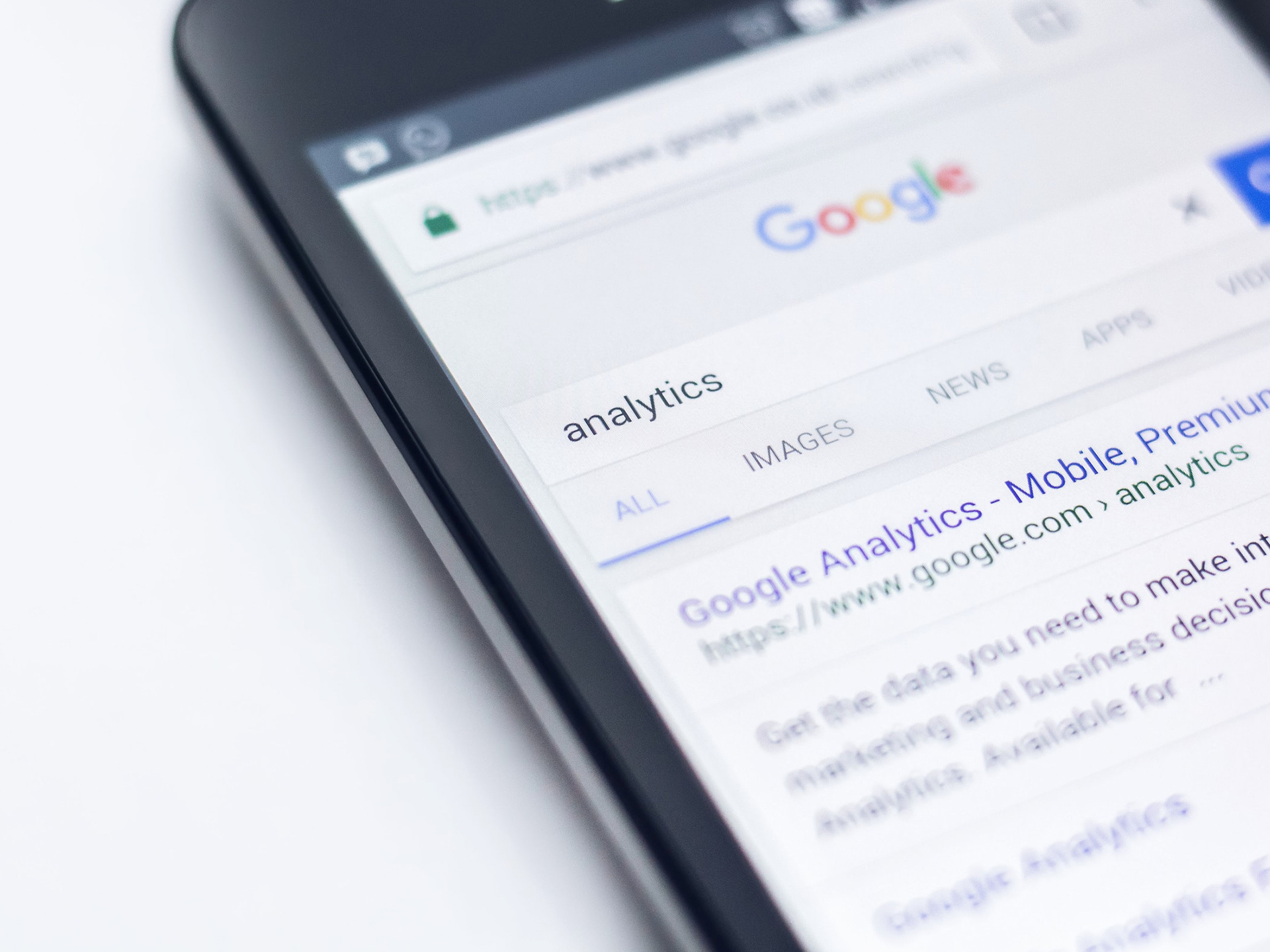Originally published March 24, 2022 , updated on August 1, 2025

In today’s world, where digital rules supreme, buyers are in the driver’s seat. They do their own research and often make decisions before even speaking to a sales rep. That’s where B2B content marketing makes all the difference. It can help businesses show up with the right information at the right time in their customer’s buying journey.
For SMEs, content marketing isn’t just a ‘nice-to-have’ anymore. It’s one of the most effective ways to showcase your expertise and attract the right customers. And you can do this without a massive marketing budget.
In this guide, we’ll break down everything SMEs need to know about B2B content marketing: the challenges, the strategies that work, and how to measure what’s really driving results.
Why Content Marketing Matters for SMEs
As we alluded to above, content marketing is one of the smartest ways SMEs can connect with potential customers. Here’s why it matters more than ever, especially for smaller businesses:
Builds Trust and Levels the Playing Field
In B2B, trust is hard-won, especially for smaller businesses that don’t have the name recognition of big brands. Publishing helpful, relevant content not only shows that you understand your audience’s challenges but that you have the expertise to solve them. Over time, this builds credibility and strengthens your brand’s reputation, even if you’re a smaller player in the market. No flashy ad budget required.
Brings in the Right Leads (Without a Big Sales Team)
Great content works like a magnet. It helps attract potential buyers organically. When someone searches for a solution and finds your content, you’ve already started the conversation. This helps smaller teams nurture leads at scale, even with limited resources.
You Can Compete with Bigger Players
In a noisy, competitive marketplace, smaller businesses struggle to be heard. The good news is you don’t need a massive budget to make an impact. With the right content, SMEs can punch above their weight. It’s all about delivering insight and value. If your content speaks directly to your ideal customer’s pain points, you can stand out, even in a crowded space.
Supports the Modern B2B Buyer Journey
Today’s buyers prefer to do their own research before making a purchase. According to the 2023 Content Preferences Survey Report, 71% of B2B buyers said they typically consume 3–5 pieces of content before reaching out to a vendor. For SME’s this is an opportunity to show up early in the buyer journey. Whether it is through a blog or an explainer video, you can educate potential customers and position your business as the right choice, long before they are ready to buy.
Challenges SMEs Face with B2B Content Marketing

While content marketing can be a powerful tool to help SMEs grow, it’s not without its hurdles. Smaller businesses often face unique challenges that can make it difficult to create and manage content effectively. Understanding these roadblocks is the first step to building a B2B content marketing strategy that actually works. Below are some of the most common challenges SMEs face in B2B content marketing.
Limited Resources
Most SMEs don’t have the luxury of a dedicated marketing department. Small businesses tend to operate with small teams and tight budgets, making it hard to dedicate time or money to a full content strategy. As a result, content often takes a backseat to more urgent day-to-day tasks.
Tip: Start small and go from there. A few pieces of well-researched, evergreen content can go a long way, especially if you repurpose them across different platforms.
Content Creation Bottlenecks
You might have great intentions, but creating consistent, high-quality content is tough. Good content requires a strategy, good research and writing skills, SEO knowledge and design skills to make the content pop. Many SMEs don’t have an in-house team of writers or designers, so creating consistent and relevant content is a challenge. Without a clear process, the content can quickly fizzle out or cause strain on other areas of the business.
Tip: Craft a content calendar and designate clearly defined roles for each step of the process. Consider outsourcing to a content marketing agency to ease internal pressure.
Distribution & Visibility
Creating content is only half the battle. Getting it seen is where the value lies. SMEs often post content and then hope for the best. But without a distribution strategy, even great content can go unnoticed or struggle to reach the right audience. Limited budgets, small followings, lack of SEO know-how, and inexperience in content strategy can all contribute to low visibility.
Tip: Start with a simple, organic strategy that don’t require much investment. This might include email newsletters, LinkedIn posts, industry partnerships, or even asking your team to share on their personal profiles.
Measuring ROI
Many SMEs struggle to connect content marketing efforts to tangible business outcomes. But without the right tools or analytics know-how, it’s difficult to track what’s working. This makes it hard to justify your effort or improve future content based on data.
Tip: Start by tracking simple but meaningful metrics. Time on page, form submissions, newsletter opens, and website impressions and bounce rates. Free tools like Google Analytics and basic CRM tracking can already provide useful insights.
The 5 Steps to Crafting an Effective B2B Content Marketing Strategy for Your SME
Creating a solid B2B content marketing strategy might sound overwhelming, but breaking it into clear steps can make it far more manageable. And way more effective and efficient.
1. Define Clear Goals and Target Personas
Before you start writing a single blog post, get clear on what you want your content to achieve. Is it lead generation? Nurturing existing customers? Supporting your sales team? Once you’ve nailed that down, focus on who you’re talking to. Build simple buyer personas based on real customers. Focus on who they are and what they are looking for. Define their challenges. And then look at what stage of the buying journey they’re in. This helps you create the right content for the right person at the right time.
2. Create Value-Driven, Personalized Content
Your content should help your buyer, not just sell. Think useful how-to guides or answers to common questions. Or perhaps it is an opinion piece on a controversial topic that your customer is interested in. According to the 2023 Content Preferences Survey Report, B2B buyers want content that’s tailored to their needs and backed by data. So make it specific and informative.
3. Choose the Right Formats
Not all content has to be long-form blogs or whitepapers. Case studies, infographics, videos, webinars, and even ROI calculators are super effective, especially for busy decision-makers. The same report shows buyers increasingly prefer short, interactive content. So think beyond text when planning your content mix.
4. Leverage Existing Content
You don’t have to start from scratch every time. A single blog post can be turned into a LinkedIn carousel, an email newsletter snippet, or even a short video. Build your content around central themes (content pillars), then break those down into smaller, related topics. This keeps your messaging consistent and saves loads of time.
5. Outsource to a B2B Content Agency
Outsourcing your content marketing to a B2B content agency can save time, boost quality, and bring in fresh expertise. It allows your team to focus on core business tasks while experienced professionals handle strategy, content creation, distribution, and tracking. Outsourcing to a B2B content agency often comes at a lower cost than hiring full-time staff in-house. It’s a smart move for growing SMEs.
A good strategy doesn’t need to be complicated. It just needs to be focused and flexible. And built with your audience in mind.
How to Amplify and Distribute Your Content to Reach the Right People
So now you have content that potential buyers will engage with, but content creation is only half the job. Getting it in front of the right people is what makes it work.
Organic Channels
Start with the basics: make sure your content is optimized for search (SEO) so it’s discoverable when prospective buyers are Googling solutions. Regularly publishing blog posts helps build long-term visibility. On social media, focus on LinkedIn – it’s the top platform for B2B. Additional tips include sharing useful content, joining relevant conversations, tagging relevant brands, and encouraging your team to engage with posts to expand reach.
Email Marketing
Email is still one of the most powerful tools for nurturing leads. Send helpful, targeted content based on where your customers are in their buying journey. Segment your list so prospects receive what’s most relevant to them. This could be educational content, case studies, promotions, or product updates.
Paid Promotion
If you’ve got content that performs well organically, consider boosting it with paid ads to expand your audience. Platforms like LinkedIn allow for precise targeting, especially for account-based marketing (ABM), where you tailor content for specific companies or decision-makers.
The key is consistency. Keep testing and refining your approach to learn what channels and formats deliver the best results.
Tools to Help You Measure Success (or Failure)
You don’t need a big budget to start measuring your content marketing efforts.
Free tools like Google Analytics can show you:
- How much traffic your content gets,
- How long people stay on your pages
- Which content keeps them engaged
If you use a CRM (like HubSpot, Zoho CRM, Salesforce or Bitrix24) you can see how leads interact with your content over time. For example, did someone download a guide before booking a demo? That’s a sign that your content is doing it’s job,
Once you’re ready to level up, there are affordable marketing automation tools that offer more features. Platforms like HubSpot Starter, Mailchimp, MailerLite, and Zoho Marketing Plus offer small business-friendly pricing and provide extra features like:
- Email campaign tracking
- Content performance dashboards
- Sales funnel insights
These tools help you understand which pieces of content are moving people along the sales funnel and which ones need improvement.
The key is to start simple and scale as you grow. Even simple insights can help you create better, more effective content
Common Pitfalls of a B2B Content Marketing Strategy – and How to Avoid Them

Even with the best intentions, many SMEs fall into common content marketing traps that limit their success. To ensure your efforts pay off and give the results you are looking for, watch out for these mistakes and take proactive steps to avoid them.
Publishing Without a Strategy
Creating content just for the sake of it often leads to scattered messaging and wasted effort. For SME’s, every piece needs to count. Without clear goals or target personas, your content won’t speak to the right audience or support your business outcomes. Start with a clearly documented strategy that aligns content with each stage of the buyer journey.
Prioritizing Quantity Over Quality
Pushing out lots of content without considering its value can hurt your brand more than help it. One well-crafted and credible piece that solves a real problem is far more effective than five generic blog posts. Focus on creating useful, high-quality content that speaks specifically to your particular audience. This builds trust and authority.
Ignoring Distribution and Promotion
Even the best content won’t work if no one sees it. Many SMEs hit “publish” and stop there. Think about where your customers spend most of their time. Build a plan around these channels, be it via social media, email, SEO, or paid promotion if needed. Reaching the right audience is just as important as creating the content itself.
Failing to Use the Data
If you’re not tracking performance, you won’t know what’s working. And for small businesses, every effort needs to make its mark. Use analytics to understand what content engages your audience and what needs improving. Regularly review results and adjust your approach to get better outcomes over time.
Turning Content into Your Competitive Advantage
In summary, B2B content marketing offers SMEs a powerful way to build trust, generate leads, guide buyers through the sales journey, and ultimately grow their business. And you can achieve this without the hefty budgets of bigger players. By having a solid strategy, consistent top-quality content, making use of best practices, and continually optimizing, small businesses can punch above their weight and stand out in crowded markets. Remember: content is more than just marketing – it’s your competitive edge.
Need help creating smart, scalable content that drives real results? Partner with Goodman Lantern. Our expert team helps SMEs turn content into growth.
FAQs
1. What Types of Content Work Best for B2B Marketing?
Effective B2B content includes blog posts, case studies, whitepapers, webinars, infographics, and short-form videos. The key is to match the format to your audience’s preferences and their stage in the buying journey. Educational content works well early on, while demos and ROI tools support decision-making.
2. How Often Should We Publish Content?
Consistency matters more than frequency. Start with what’s realistic. Even 1–2 high-quality pieces per month can make a difference. The goal is to build a steady flow of valuable content that keeps your brand visible and useful to potential buyers.
3. Do We Need a Big Budget for B2B Content Marketing?
Not at all. Many SMEs succeed with small budgets by focusing on quality, repurposing content across channels, and using free or affordable tools like Google Analytics and HubSpot Starter. Outsourcing to a B2B content agency can also be a cost-effective way to scale without hiring full-time staff.
4. How Do We Know if Our Content Is Actually Working?
Track key metrics like website traffic, time on page, conversion rates, and engagement (e.g. downloads, shares, email clicks). Also, look for signs of progress through the sales funnel. This includes more qualified leads, shorter sales cycles, and better conversations between sales and marketing.
Post Views: 907


















